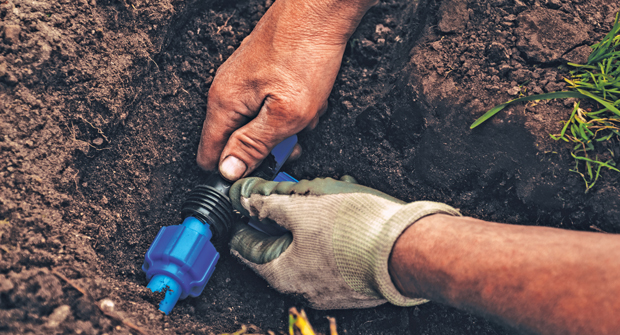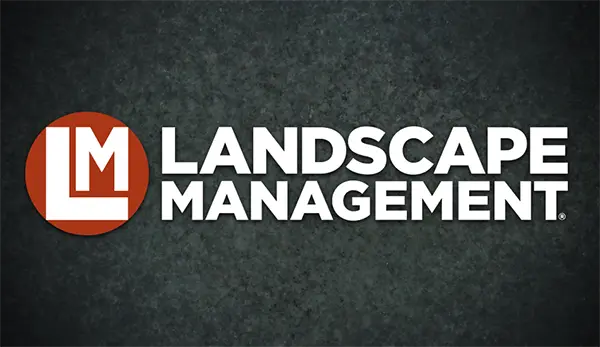By: Warren Gorowitz, CLIA, Ewing Irrigation
Once again, July is here and that means it’s Smart Irrigation Month. As I put together my thoughts, I felt compelled to review my past Smart Irrigation Month writings over the last several years, and discovered I’ve been pretty consistent in my ramblings.
So, you’re wondering, what new and profound thought can I share with you this year?
Smart Irrigation Month is really all about opportunities. The old saying “You can lead a horse to water, but you can’t make him drink” couldn’t be truer in this case. There are a lot of opportunities out there related to Smart Irrigation Month, and the real question is what are YOU going to do about it?
Water and drought
I always try to keep an eye on what’s going on throughout the country in regard to water shortages, including current drought conditions and forecasted seasonal outlooks.
As I write this, it appears we can expect to continue to see drought-stressed areas throughout the summer season. Is the glass half empty or half full? I see this is an opportunity for our industry to shine. We have the resources and tools to use outdoor water efficiently. No matter how you look at it, when the water availability and accessibility situation becomes severe enough, there’s a good chance that outdoor use is going to be the first target. Health and safety water use requirements will usually win out over outdoor water use requirements when competing with each other for limited water resources.
Perception is reality
No one can deny the fact that our industry revolves around water. Of the estimated 29 billion gallons of water used daily by households in the U.S., nearly 30 percent (7 billion gallons) is devoted to outdoor water use — with household use in dry climates climbing as high as 70 percent, according to the U.S. Environmental Protection Agency (EPA).
Statistics show that nearly half of that outdoor water use is wasted due to inefficiency in irrigation equipment and scheduling. Whether we like it or not, there is a perception that the landscape industry contributes to that. We have an opportunity to change that perception, but it will take some time and effort. Let’s look at three factors influencing that goal.
1. Change. For whatever reason, our industry is often slow to change. Whether it’s because of a fear of change itself or because old habits die hard, we’re often cautious of embracing new concepts or technologies.
When’s the last time you pulled out a phone directory to look up a person or business? Do you remember when that was THE resource? Now, it’s as easy as going online and searching for a person or business. You can even do it in the palm of your hand with a smartphone! (On a side note, think of all of the paper we’re saving by not having to print those big, bulky phone books anymore.)
Change can be difficult, but it can also represent a barrage of new opportunities. Those who position themselves to prepare for and embrace a potential change in its earliest phases are those who will most likely benefit from new opportunities.
Even if you are leery of diving headfirst into change, understanding emerging trends and technologies will help you be more adaptable and enable to shift your course much faster down the road — at the cusp of when a once-unfamiliar change begins to become the new norm.
2. Education. I believe that everything starts with education. Every landscape and irrigation professional should understand what smart irrigation is, why water efficiency is important to them and their customers, and how these tools can help grow their business.
There are countless education opportunities out there from organizations like the Irrigation Association, irrigation equipment manufacturers and irrigation distributors. Have you checked out YouTube lately? There are myriad irrigation product installation and operation videos. We are in the information age, and knowledge is power!
3. Products. The evolution of smart irrigation products continues. There are more than a dozen smart controllers on the market now. Other products such as soil moisture and rain sensors, high-efficiency sprinkler nozzles, pressure-regulated sprinkler heads, low-volume drip irrigation, and flow meters should be incorporated into every new installation or irrigation system retrofit.
After many years, we now have EPA WaterSense labeled irrigation controllers entering the market. The WaterSense label requires products to be independently certified to meet EPA’s water efficiency and performance criteria. Developed based on the Smart Water Application Technologies protocol for climate-based controllers, the weather-based irrigation controller specification also requires additional features and capabilities for flexibility and adaptability to local weather conditions.
In the near future, I believe smart controllers will be the only acceptable type of controllers to install. What are we waiting for? Consider making it business practice now to only promote smart weather-based or soil moisture sensor irrigation controllers.
With all of the opportunity before us, what are you waiting for?

